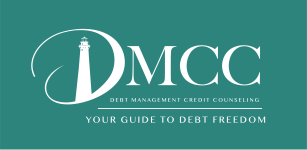FEATURE ARTICLE: Six tips for saving money on airfare
With fees, fine print and blackout dates, locking in a low price on your plane ticket can seem impossible. We have some tips that can help cut the cost of flying, plus help organize your search for the best deal.
In addition to setting up alerts to track fares and searching for domestic flights three and a half months prior to booking (five and a half for international), you should also buy your ticket early—you’ll pay a premium if you wait to within 14 days of travel. Also, when comparing flights online through sites such as Expedia, Kayak, Priceline and Travelocity, be sure to check the airline’s own site, which can be cheaper because there is no commission.
How to get rock-bottom rates:
- Look beyond discount airlines: Keep in mind that discount airlines are not always the cheapest. Airlines cannot afford to be more expensive than their competitors for comparable flights at comparable times.
- Buy at 3 p.m. on a Tuesday: Most sale fares kick in on Monday at 8 p.m., and end on Thursday at 8 p.m., and according to Rick Seaney, co-founder of FareCompare.com, the greatest number of cheap seats will be available at 3 p.m. on Tuesday.
- Avoid flying on weekends: Be mindful of booking weekend flights because these are popular with both business travelers and vacationers. More specifically, you should avoid flights on Friday afternoon through Monday morning, if you can.
- Fly hungry: The least expensive flights tend to take off at dawn, or around lunchtime, as well as after 6 p.m.
- Consider a connecting flight: Connecting flights can be substantially cheaper than flights that are non-stop, especially for international travel.
- Shop for one seat: Reservation systems are programmed so that if there’s one too few cheap seats for your group, all members get bumped up to the next price level. So if you’re traveling with a group, establish the base price fro one passenger and compare it with the price for all.
MONEY SAVING TIP: Shop at the drugstore
Savvy shoppers can score huge deals on groceries and household supplies by shopping at drugstores like Walgreens, CVS or RiteAid Pharmacies. As an incentive to get you in their doors and back again, these stores offer rock-bottom sales on everything from canned soup to cleaning supplies. Combine the sales with store and manufacturers’ coupons and many of your purchases may be free, says blogger Kirby. “I haven’t paid a dime for shampoo or toothpaste in more than two years,” she says.
How it works: At Walgreens.com, click the “weekly ad” tab; certain advertised items offer register rewards you can use like cash on your next Walgreens purchase. At CVS.com, click on the “extra care” link to sign up for a free store card. When you use it, you’ll earn 2 percent in “extra bucks” (CVS store credit) on every store or online purchase. Certain purchases, noted in the “weekly store ad” link, also generate extra bucks you can redeem on your next visit. At RiteAid.com, click the “single check rebates” icon. That site requires you to submit receipts to earn monthly rebates.
Extreme couponer Crystal Paine of Moneysavingmom.com offers helpful tutorials for the Walgreens and CVS programs and countless others on her site.
www.bankrate.com
DID YOU KNOW…Uncle Sam can help pay for child care?
Married and unmarried parents who work can qualify for a child care credit to help with the costs of providing child care. Certain cafeteria plans allow participants to contribute to a flexible spending account (FSA) that can be used for child care expenses. Expenses paid with FSA money cannot be claimed for the child care credit. Also, the maximum expenses eligible for the child care credit are reduced by the FSA paid expenses.
Expenses for a child in nursery school, preschool, or similar programs for children below the level of kindergarten are expenses for care, even though labeled education. Expenses to attend kindergarten or a higher grade are not expenses for care; however, before- and after-school care expenses do qualify until age 13.
The maximum you can put into the FSA is $5,000. The maximum expenses eligible for the credit when you have two eligible children is $6,000. However, the $6,000 is reduced by the $5,000 from the FSA, so your maximum eligible credit is $1,000. Use Form 2441 to compute the child credit and FSA exclusion.
www.bankrate.com
